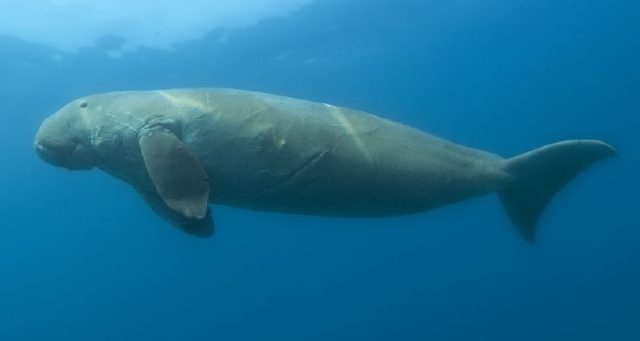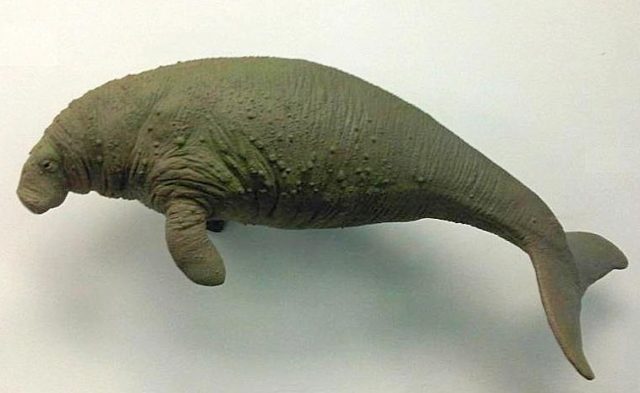In 1741, German naturalist Georg W. Steller traveled with Vitus Bering on his voyage in the North Pacific. On Bering’s Great Northern Expedition, the ocean area around the Alaskan mainland was discovered and then later named after him. The captain and crew of the exploration vessel became sick with scurvy and refused to accept the advice of Steller and his assistant, who were consuming berries and leaves from their visit to the Kayak Island. Eventually, with only a few crewmen to man the ship, it became shipwrecked on what is now called Bering Island.
Here, with what remained of the crew, Steller studied the local flora and fauna, including the sea cow. His notes are the only information gathered about the sea cow while it still existed. It was one of the sirenian mammals and lived in the shallow kelp beds around the Commander Islands. Many of the new animals and birds Steller recorded were named after him and not many continue to exist today. The area is a highly productive fishing ground these days; back then it would have teamed with sea life, including the now-extinct Steller sea cow.

The Stellar sea cow was related to other sirenians such as the dugongs and manatees. It was the largest of them all and was thought to reach 8-10 tons and 9-10 meters in length. Due to the cold environment that it flourished in, it had a very thick layer of blubber for insulation. It lived in small family groups and fed only on kelp. As it was a slow moving creature, it was easily hunted into extinction and within thirty years of its discovery, the Steller sea cow existed no more.
It is thought that due to the cold area it lived in, it was stunted in growth; if it had lived in warmer waters, it would have been significantly bigger. It was a little different from other sirenians that survive today in that it was unable to submerge itself completely since its body was very buoyant. Its skin was very thick and this is thought to be an adaptation to prevent injury on sharp rocks.
The tail was forked like a dolphin’s tail, the head of the animal was quite small in comparison to the body, its tongue was rough and textured and it did not have teeth like the other sirenians but had stiff bristles and keratinous plates in its mouth for chewing. It had small eyes and long, wide nostrils; like sirenians of today it had no eyelids but used sphincters to close its eyes. According to Steller, the sea cow made no sound other than heavy breathing and deep sighs.

If it had predators other than humans, it is unknown. Scientists assume that the kelp beds would have protected them from sharks, but it is possible they may have been hunted by killer whales. Like the whale, this animal did have parasites, but as the samples were lost from Steller’s collection, no positive identification has been made of them.
Due to their not being able to submerge, the sea cows were easily harpooned. Russian seal hunters used them as valuable meat on long journeys, but some hunting was just wasteful. It was thought that there had been approximately 2,000 of these animals alive in 1741.
When Steller hunted and captured a female, he noted that the male attacked the boat and then followed them to shore, even though its mate was now dead. The rest of the group also attacked the boat and he observed them helping injured members of their group. Females were in calf for about a year; autumn was the most common time for the calf to be born. When it wanted to sleep, it swam into deeper water to prevent itself from being beached.

The Steller sea cow has been discovered to be the descendant of an extinct California tropical sea cow called the Cuesta sea cow. It is thought the Cuesta sea cow died out due to the coming of the ice age. Its descendants that were able to adapt eventually created the Steller sea cow, which could cope with colder water.
Here is another story from us: Human hunters and the extinct Eurasian cave lion
The first bones of a Steller sea cow were discovered around 1840, in the area of the Commander Islands. By 2006, 27 almost-complete skeletons and 62 skulls existed in various museums and research facilities around the world.
